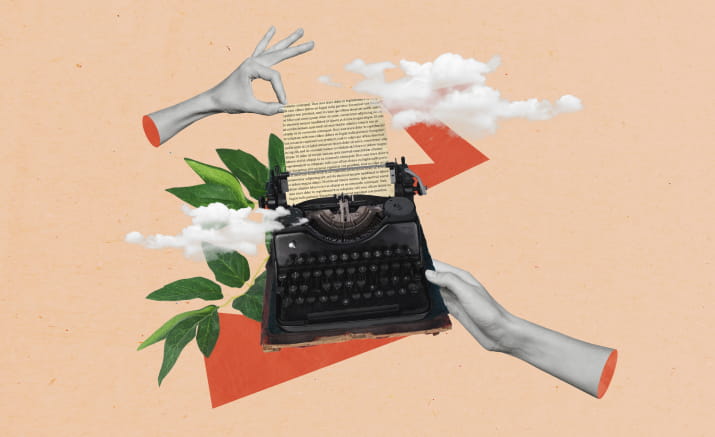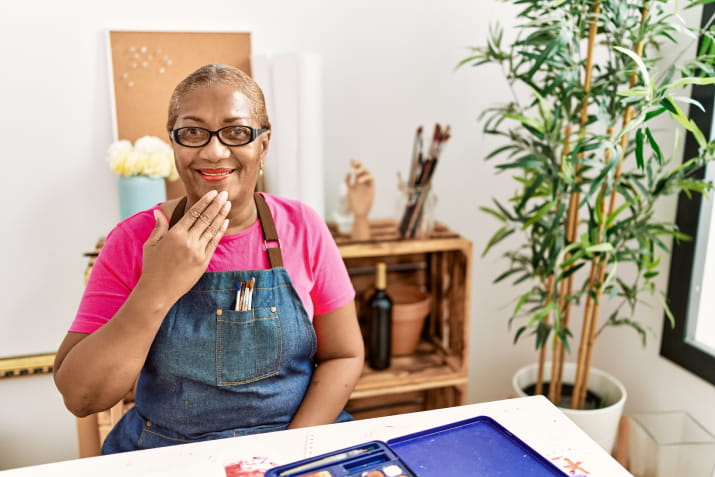Why should I complete Indigenous cultural awareness training?
Learn to engage respectfully with Indigenous people and become a better ally.

What is Indigenous cultural awareness training?
Indigenous cultural awareness training, sometimes known as Aboriginal cultural awareness training, gives you an introductory knowledge of Aboriginal and Torres Strait Islander culture and appropriate ways of engaging with them.
Perhaps you’ve come to realise how little you know of this land’s deep history, or the people who continue to care for it, as they have for 65,000 years.
Maybe you see the systemic racism that continues to oppress them and deny them fair treatment in all aspects of society.
Has awareness of your privilege grown to the point where you are now asking yourself, how can I do more?
Aboriginal cultural awareness and cultural competency training could be that first step towards doing more. Learn about their worldviews and the issues that impact them, but most importantly, hear it directly from them.
What's the difference between cultural awareness and cultural competency?
According to Anthony Olive, a Bundjalung man from the Casino area of New South Wales and Team Leader, Indigenous Australian Student Services at Southern Cross University (SCU), “Cultural awareness is recognising that different cultures approach a situation in different ways, and that all are equally valid. Cultural competency, on the other hand, means that you have acquired the ability to take part in intercultural exchanges appropriately and respectfully.”
The latter involves ongoing learning, and includes growing your knowledge, awareness, attitudes and skills (such as critical reflection and emotional intelligence).
What is cultural awareness in the workplace?
On one level, cultural awareness in the workplace is the same as in everyday life. Says Anthony, “I think once again, it’s about accepting different cultures, striving to become better informed and better equipped to understand other cultures.”
On another level, organisations need to implement policies and guidelines to make workplaces culturally safe for Aboriginal and Torres Strait Islander people.
For example, putting into place flexible working conditions that honour Indigenous practices, such as leave for sorry business, which encompasses all the ceremonies and protocols that a person must attend when someone related dies. What’s interesting is that because of the kinship system, an Aboriginal person’s concept of family is far wider than the nuclear family, which is the Anglo-centric norm. Knowing this, it then makes sense why an Aboriginal person may have many to take leave for sorry business more often than other employees.
There is also the issue of cultural load—the additional, informal workload that Aboriginal and Torres Strait Islander people take on. This work is spurred by organisations’ and colleagues’ expectations that Indigenous employees are responsible for educating non-Indigenous colleagues about Indigenous matters and racism or ‘representing’ all Indigenous people.
Instead, organisations should acknowledge this extra work, include it in job descriptions and reward it accordingly.
The impact of cultural awareness in the workplace cannot be overstated. Happy Indigenous employees who feel trusted, respected and rewarded will contribute to greater productivity in their organisations. And diversity in the workforce leads to diversity in ideas, a key ingredient of successful organisations.
Why is it important to learn about Aboriginal and Torres Strait Islander cultures?
It’s actually pretty simple—if you visit or move to a different country, you’d try to learn about the local culture and practices. In this case, anyone who’s non-Indigenous is essentially a guest (however permanent) on Indigenous land.
For instance, take the Welcome to Country, in comparison to the Acknowledgement of Country (you can read about the difference between the practices at UNSW Sydney’s explanation page).
“If you’re delivering a program on a certain country, especially from an Indigenous perspective, you need to acknowledge the people you’re working with, within those communities. You wouldn’t just pull someone from elsewhere to deliver something on country when they’re obviously not from the area or known as knowledge holders of that place,” says Anthony.
If you need more reasons, here’s a big one—Aboriginal and Torres Strait Islanders were the world’s original astronomists, millennia before the Babylonians and Greeks. With a culture that’s remained unbroken for 65,000 years, they developed ways to observe the sun, moon and stars—which they used for navigation, calendars and predicting weather.
They also created some of the oldest aquaculture systems globally. At Budj Bim, on Gunditjmara country, Aboriginal people used volcanic rocks to build sophisticated weirs, dams and traps for fish and eels.
While these accomplishments are beginning to be valued as highly as Western-centric monuments and cultures, the recognition is long overdue.
There is also the ugly truth about colonial invasion and it’s hugely destructive impact on First Nations lives and culture, the effects of which continue today. Becoming culturally aware and competent starts by learning about all the elements that shape Aboriginal lives and outlook.
How to develop cultural awareness
“Probably the most important thing to do in trying to develop Aboriginal cultural awareness is to ensure you engage with and genuinely seek input from Aboriginal people,” says Anthony.
“For example, if you’re trying to deliver a program that’s culturally aware, the first thing to do is engage Elders in the community, ask for feedback and implement their guidance. For example, at SCU, we have an Elders Council that sits within the university. They advise us on all facets of our Indigenous engagement so that it’s delivered in a way that’s culturally appropriate and within the protocols of how business is conducted in that country/area.”
By consulting and truly listening to Aboriginal and Torres Strait Islander people, you should naturally increase your cultural awareness and cultural competency. And the more you know, the more you’ll probably want to know.
Should you be interested in taking Indigenous cultural awareness training online, you could enrol in a short course, bachelor degree or graduate certificate, all taught by leading Australian universities online through Open Universities Australia.
Short course options allow you to choose from a wide range of topics, including First Peoples’ Health, Australian Aboriginal Art, Indigenous Community Development, Indigenous Lifeworlds: Sovereignty, Justice, Society and many more.
Southern Cross University’s Bachelor of Indigenous Knowledge will help you gain greater understanding of Indigenous histories and knowledge systems, and build your capability in cultural protocols and Indigenous ways of knowing and being.
Ready to fill the gaps that school skipped over? Explore online Indigenous cultural awareness training now.



